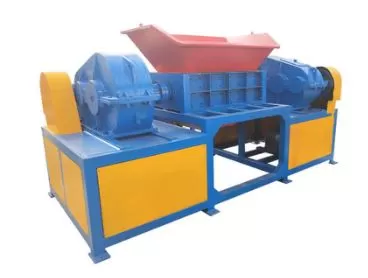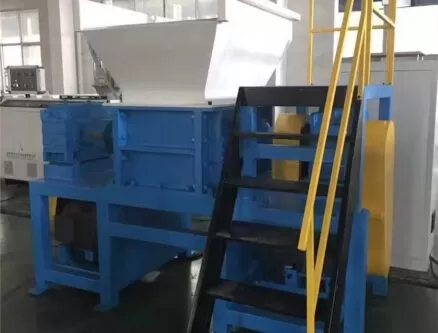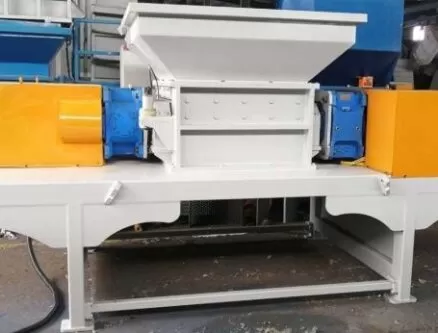City waste piling up faster than traffic during rush hour? Municipalities struggling to process mountains of mixed garbage efficiently? Yeah, I’ve seen it firsthand. And let me tell you—plastic waste is one of the most stubborn beasts in the pile. But there’s good news: plastic shredding technology is stepping up to turn this urban chaos into clean, organized opportunity. If you care about the future of city living, this post is your golden ticket.
Plastic shredding equipment plays a critical role in modernizing urban waste management. It reduces plastic volume, improves sorting efficiency, and prepares materials for recycling or energy recovery. In cities worldwide, shredders are becoming the front-line soldiers in waste processing plants.
As the CEO of Amige, I’ve worked with municipalities and private operators to turn inefficient garbage nightmares into data-driven recycling success stories.

Why is urban waste management in crisis?
Urbanization is exploding. More people = more trash.
Especially in developing cities, waste management infrastructure hasn’t caught up. Plastic waste is the worst offender—it clogs landfills, pollutes rivers, and is tricky to sort and process.
According to a report on global urban plastic waste, plastic makes up 12–20% of municipal solid waste in major cities.
Yet traditional sorting methods can’t keep up with mixed, contaminated plastics. That’s where shredding comes in.
What role do shredders play in modernizing urban waste processing?
Shredders are the muscle of the system.
They take bulky, contaminated plastic waste and break it down into uniform pieces. That makes it much easier for automated sorting, washing, or pelletizing systems downstream to do their job.
And when you’re dealing with city-scale trash, every bit of efficiency counts.
Our high-torque, low-speed shredders at Amige are designed to handle this chaos—bags, containers, wrappers, even embedded metal. They’re the trash terminators.
How do plastic shredders reduce operational costs?
Cities and waste operators are always looking to cut costs. Trust me, I’ve sat in enough budget meetings to know.
Plastic shredders reduce transport costs by lowering waste volume. A compacted pile of flakes is way cheaper to move than loose garbage bags full of air.
They also protect downstream equipment—like pelletizers and extruders—from jams and overwork.
Based on a cost efficiency study, cities that integrated pre-shredding reduced landfill fees and downstream maintenance costs by up to 35%.

Can shredders handle mixed plastic waste?
Absolutely, and that’s the magic.
City garbage isn’t sorted like factory scrap. It’s a soup of plastic bottles, dirty food containers, styrofoam, film, and who-knows-what.
Our double-shaft shredders are built to chew through all of it—wet, dry, clean, dirty. We even integrate metal separation systems to pull out surprise nails and bolts.
One municipal customer in Latin America told us: “Your shredder eats anything. It’s the goat of the garbage world.” I’ll take that as a compliment.
How do shredders support recycling and circular economy goals?
Shredding is step one in the plastic circular economy.
You can’t recycle what you can’t process. Shredders prepare plastics for washing, sorting by polymer type, and finally reprocessing into new materials.
By integrating shredding into the municipal waste stream, cities can recover more plastic and reduce virgin plastic demand.
A 2025 circularity roadmap found that cities with pre-processing stages (like shredding) increased recycling rates by 60% over five years.
What features matter most when selecting shredders for municipal use?
Let me give you the no-fluff answer:
- Durability: Must handle 24/7 operation and abrasive waste.
- Contamination tolerance: Can’t jam from small metal parts or moisture.
- Throughput: Needs to match the city’s waste volume.
- Maintenance access: City crews don’t have time for complex repairs.
- Energy efficiency: Because power bills are no joke.
At Amige, our municipal-grade shredders are designed with hydraulic maintenance doors, adjustable blades, and reinforced gearboxes. We engineer for reality, not theory.
How do shredders integrate into smart waste management systems?
Modern cities are going digital, and waste management is no exception.
Smart shredders include sensors to monitor blade wear, throughput, motor temperature, and jam frequency. All that data feeds into central systems for predictive maintenance and process optimization.
I’m personally excited about AI-controlled shredding lines. We’re currently developing systems that learn how to optimize blade rotation speed based on incoming waste type.
Check out this smart waste city case study that shows how automation cut machine downtime by 42%.

Are there global success stories of using shredders in urban settings?
Plenty—and I’ve been lucky enough to be part of a few.
In Southeast Asia, we helped a city convert a landfill-based model into a sorting-shredding-recycling loop. Plastic recovery rates went from 15% to 57% in just two years.
In Eastern Europe, one metro area replaced open dumping with a modern MRF (Material Recovery Facility) featuring our shredders. The city now sells recycled PET to local factories.
And in Latin America, a public-private partnership deployed mobile shredding units that process plastic waste on site, reducing illegal dumping and landfill load.
What’s next for shredding technology in city waste systems?
Two words: mobility and modularity.
We’re seeing more demand for mobile shredders—mounted on trucks—to serve disaster zones or remote districts. It’s waste management on wheels.
Also, modular systems that can scale up or down depending on waste volume. This flexibility is key for cities with seasonal waste spikes or budget constraints.
Our R&D team at Amige is also exploring hybrid shredders that can run on solar-assist power. Yes, even trash equipment can go green.

Check this future tech forecast for what’s coming in the next 5 years.
Conclusion
Plastic shredders aren’t just machines—they’re enablers of smarter, cleaner, more sustainable cities. If you want to modernize urban waste management, start with the shredder.
